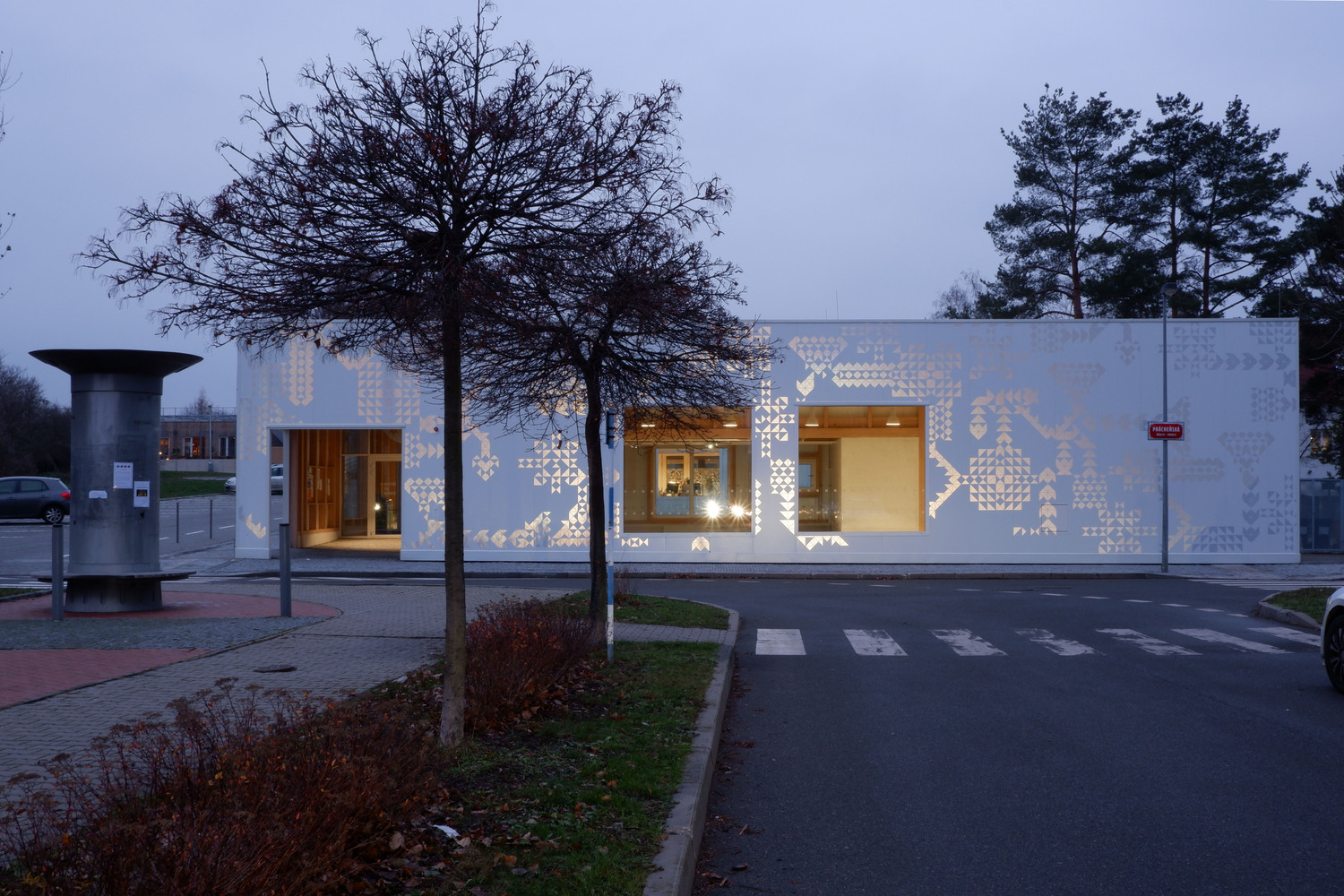PIK Residence Metropoliform
2015-03-16 21:00
架构师提供的文本描述。PIK住宅是一对退休夫妇的住所,他们经常被家人和孙子们拜访。位于雅加达新兴的门控社区之一,这个面向南面/西面的街角站点对街道有很好的能见度,并能获得天然照明,但也带来了应对下午炎热的阳光的挑战。简报主要要求提供宽敞、开放的计划、生活和娱乐空间,以便在家人探亲和举办聚会时进行良好的互动。主人和仆人之间有一个专门的分隔空间,这也是作为该地区生活传统的一部分的简短的一个关键要求。
Text description provided by the architects. PIK residence is a dwelling for a retired couple who are often visited by their families and grandchildren. Located in one of the emerging gated communities in Jakarta, this south / west facing corner site has good visibility to the street and access to natural lighting yet present the challenges to respond to the hot afternoon sun. The brief mainly called for spacious open plan living and entertaining spaces that can facilitate good interactions in the occasion of family visits and hosting their gathering party. A dedicated separated space between the master and the servants are also a crucial requirement in the brief as part of the living traditions in the region.
房子里的三个主要空间-社会空间、亲密空间和服务空间-是由一系列直线盒组织和表达的,这些直线盒相互连锁和叠加在一起,形成了整体的聚集构成。
Three main spaces in the house - the social, the intimate, and the services are organized and expressed with a series of rectilinear boxes that interlock and stack on top of one another forming the overall massing composition.
坐在骄傲的面对街道是主要的浮动盒,封装了一个游戏室的南方和一个媒体室的北部。该盒子悬臂和直接坐在上面的生活空间,形成深天篷到底层,作为遮阳的地方,在下午。沿着这个西方的正面,细而深的开口被小心地切割出来,以控制过度的太阳光。沿同一立面的更大/更深的洞口也被用作一口光井,为下面的生活区带来更多间接的自然照明。虽然在室内使用空隙作为鼓励空气流通的一种方式,但它们主要是为了加强垂直空间的相互作用。把二楼的空间连接起来的想法是用一条像桥一样的走廊用木板包裹起来,这样做的目的是进一步加强这种相互作用。
Sitting proud facing to the streets is the main floating box that encapsulates a play room to the south and a media room to the north. The box cantilevers and sits directly above the living spaces forming deep canopy to ground floor as sun shelter during the afternoon. Along this western facade, slim and deep openings are carefully cut out to control excessive sun light. A larger / deeper opening along the same facade is also employed as a light well to bring in more indirect natural lighting to the living areas below. While voids are used in the house as a way to encourage air circulations, they are mainly intended to enhance spatial interactions vertically. The idea of connecting spaces on the second floor using a bridge-like corridor wrapped with timber panelling intends to further accentuate this interactivity.
主卧室位于底层的起居空间旁,作为简短要求的一部分,使老年人能够更直接地进入。在外部,这是与强烈的纹理完成联系,作为一个更接地的集结姿态,以并列与平滑的集结以上。主卧室的屋顶设有一个美化的露台,以鼓励媒体室内外活动的结合。
The master bedroom located next to the living spaces on ground floor enables a more direct access for the elderly as part of the brief requirement. Externally, this is articulated with strong textured finishes as a more grounded massing gesture to juxtapose with the smooth massing above. The roof of the master bedroom accommodates a landscaped terrace to encourage the combination of outdoor / indoor activities from the media room.
沿东部边界,服务区垂直连接到屋顶水平作为房子的空气烟囱,以使堆栈效应。通过楼梯上的木板条进入烟囱的房屋内的暖空气将从屋顶上的窗户百叶窗中释放出来。
Along the Eastern boundary, the services zone is vertically connected to the roof level as air chimney of the house to enable stack effect. Built-up warm air in the house that travels to the chimney via timber slats along the staircase will be released from the window louvers on the roof.
 举报
举报
别默默的看了,快登录帮我评论一下吧!:)
注册
登录
更多评论
相关文章
-

描边风设计中,最容易犯的8种问题分析
2018年走过了四分之一,LOGO设计趋势也清晰了LOGO设计
-

描边风设计中,最容易犯的8种问题分析
2018年走过了四分之一,LOGO设计趋势也清晰了LOGO设计
-

描边风设计中,最容易犯的8种问题分析
2018年走过了四分之一,LOGO设计趋势也清晰了LOGO设计




























































